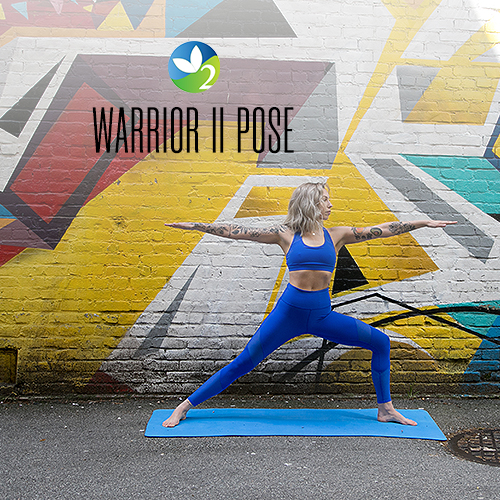If you’ve taken a freedom flow class at the studio before, then you’ve probably experienced warrior II pose, virabhadrasana II, in some variation. This full body pose is a great way to challenge strength, balance, flexibility, and mobility all at the same time!
Benefits:
Strengthens shoulders, arms, legs and thighs. Stretches groin, thighs, and ankles. Improves balance and challenges stability.
How to:
- Depending on the instructor, you may begin from tadasana (mountain pose) and step back into a lunge, or come into the pose from adho mukha svanasana (downward facing dog) and step forward into a lunge.
- Once you are in a lunge position, rotate your back foot parallel to the back of your mat, making sure to ground the outside edge of that foot into the mat.
- Make sure your front foot is pointing forward and that the front heel is lined up with the middle of your back foot.
- “Windmill” the rest of your body up (or simply bring the rest of your body up), bringing a bend into your front knee while keeping that back leg straight.
- Make sure that your front knee lines up with your front ankle. A common mistake people make is to keep their feet too close together, creating an overbend in that front knee and front ankle.
- Your hips will be in an open position, so try to resist the urge to turn your hips to face forward.
- Keep your torso upright and try to stack your shoulders over your hips. For some, with tighter hips, their torso will be more forward facing than turned to the side and that’s totally find to modify.
- Raise your arms until they are in line with your shoulders, one in front and one in back. Extend your fingers long and take your drishti, or focus point, over your front fingers.
Modify it:
Bring your feet a little bit closer together, and take some of the bend out of the front knee in order to make this pose more accessible to you. If you have tight hips, instead of lining up your front heel to the middle of your back foot, line up your front heel with your back heel.

